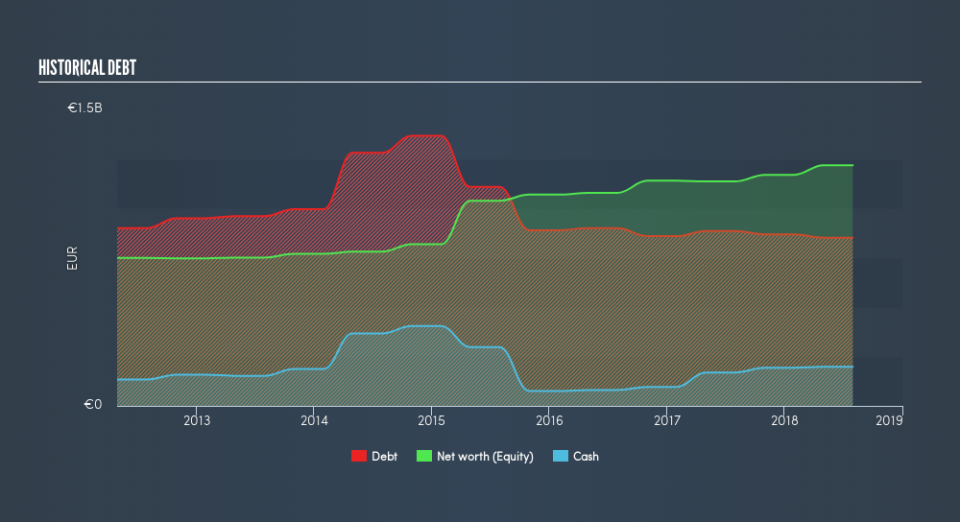Are Neopost S.A.’s (EPA:NEO) Interest Costs Too High?

Want to participate in a short research study? Help shape the future of investing tools and receive a $20 prize!
Investors are always looking for growth in small-cap stocks like Neopost S.A. (EPA:NEO), with a market cap of €811m. However, an important fact which most ignore is: how financially healthy is the business? Tech companies, even ones that are profitable, are inclined towards being higher risk. Assessing first and foremost the financial health is crucial. Here are a few basic checks that are good enough to have a broad overview of the company’s financial strength. However, this commentary is still very high-level, so I recommend you dig deeper yourself into NEO here.
How does NEO’s operating cash flow stack up against its debt?
Over the past year, NEO has maintained its debt levels at around €851m which accounts for long term debt. At this stable level of debt, NEO currently has €198m remaining in cash and short-term investments for investing into the business. On top of this, NEO has generated €239m in operating cash flow over the same time period, resulting in an operating cash to total debt ratio of 28%, signalling that NEO’s debt is appropriately covered by operating cash. This ratio can also be interpreted as a measure of efficiency as an alternative to return on assets. In NEO’s case, it is able to generate 0.28x cash from its debt capital.
Can NEO meet its short-term obligations with the cash in hand?
With current liabilities at €531m, the company has been able to meet these commitments with a current assets level of €851m, leading to a 1.6x current account ratio. Usually, for Tech companies, this is a suitable ratio since there is a bit of a cash buffer without leaving too much capital in a low-return environment.
Can NEO service its debt comfortably?
With debt reaching 70% of equity, NEO may be thought of as relatively highly levered. This is not uncommon for a small-cap company given that debt tends to be lower-cost and at times, more accessible. No matter how high the company’s debt, if it can easily cover the interest payments, it’s considered to be efficient with its use of excess leverage. A company generating earnings after interest and tax at least three times its net interest payments is considered financially sound. In NEO’s case, the ratio of 5.85x suggests that interest is appropriately covered, which means that debtors may be willing to loan the company more money, giving NEO ample headroom to grow its debt facilities.
Next Steps:
Although NEO’s debt level is towards the higher end of the spectrum, its cash flow coverage seems adequate to meet obligations which means its debt is being efficiently utilised. This may mean this is an optimal capital structure for the business, given that it is also meeting its short-term commitment. I admit this is a fairly basic analysis for NEO’s financial health. Other important fundamentals need to be considered alongside. I recommend you continue to research Neopost to get a more holistic view of the small-cap by looking at:
Future Outlook: What are well-informed industry analysts predicting for NEO’s future growth? Take a look at our free research report of analyst consensus for NEO’s outlook.
Valuation: What is NEO worth today? Is the stock undervalued, even when its growth outlook is factored into its intrinsic value? The intrinsic value infographic in our free research report helps visualize whether NEO is currently mispriced by the market.
Other High-Performing Stocks: Are there other stocks that provide better prospects with proven track records? Explore our free list of these great stocks here.
We aim to bring you long-term focused research analysis driven by fundamental data. Note that our analysis may not factor in the latest price-sensitive company announcements or qualitative material.
If you spot an error that warrants correction, please contact the editor at editorial-team@simplywallst.com. This article by Simply Wall St is general in nature. It does not constitute a recommendation to buy or sell any stock, and does not take account of your objectives, or your financial situation. Simply Wall St has no position in the stocks mentioned. Thank you for reading.


